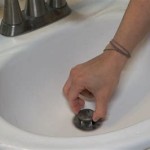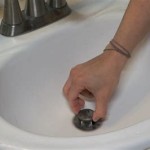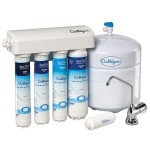Black Sludge in Bathroom Sink: Causes and Solutions
The sight of black sludge in your bathroom sink can be alarming and unsettling. It appears as a dark, gooey substance that clings to the sink's drain and can emit an unpleasant odor. While the sight itself may seem gross, understanding the causes behind it can help you address and prevent its recurrence. This article aims to dissect the common reasons behind black sludge formation, explore its implications, and offer effective solutions for its removal and prevention.
Understanding the Cause: A Look at the Culprits
Black sludge in bathroom sinks is often a result of a combination of factors. Here are some key culprits you should be aware of:
1. Microbial Growth: The Silent Culprit
The primary culprit behind black sludge is the proliferation of bacteria, mold, and other microorganisms. These microscopic entities thrive in damp, dark environments, which bathroom sinks often provide. They feed on organic matter like hair, soap scum, toothpaste, and even skin cells that accumulate over time. As they multiply, they produce a sticky, slimy substance that adheres to the sink and drain, eventually turning a dark black color.
2. Hard Water: A Common Contributing Factor
Hard water, characterized by a high concentration of minerals like calcium and magnesium, can exacerbate black sludge formation. These minerals often react with soap and other cleaning products, forming a residue that sticks to surfaces and provides a breeding ground for microbes. The residue itself can appear whitish or yellowish, but the microbial growth occurring within it can contribute to the black sludge.
3. Poor Drainage: A Conducive Environment
A slow or clogged drain doesn't just impede water flow; it also creates a perfect environment for microbial growth. Stagnant water provides a haven for microbes to flourish, leading to the accumulation of black sludge. The lack of proper drainage can also contribute to the buildup of organic matter that fuels microbial growth.
Consequences of Black Sludge: Beyond Aesthetics
Beyond its unsightly appearance, black sludge can lead to further complications:
1. Unpleasant Odors: A Sign of Decay
The decaying organic matter and microbial activity within black sludge release foul odors that can permeate the bathroom. These odors can become especially potent if the sludge is left unchecked, making the bathroom unpleasant to use.
2. Clogged Drains: A Flow Disruption
Black sludge can contribute to clogged drains, hindering water flow and causing backups. The sticky, gooey nature of the sludge can trap hair, soap scum, and other debris, eventually blocking the drainpipe.
3. Health Concerns: Potential for Allergies and Infections
While not always a concern, some individuals may experience allergic reactions to the microbes and fungal spores present in black sludge. Additionally, the presence of bacteria and mold can pose a health risk, particularly for those with compromised immune systems.
Confronting the Problem: Removal and Prevention Strategies
Removing and preventing black sludge requires a multi-pronged approach:
1. Cleaning the Sink: Eradicating the Sludge
Start by removing visible black sludge from the sink using a cleaning solution. A mixture of baking soda and vinegar can be effective for dissolving the sludge. For stubborn residue, consider using a commercial drain cleaner. However, exercise caution when using chemical cleaners, as they can damage the sink's surface.
2. Unclogging the Drain: Restoring Flow
Remove any visible obstructions from the drain. If the drain is still sluggish, consider using a plunger to dislodge the blockage. In severe cases, you may need to utilize a drain snake or call a plumber for professional help.
3. Preventing Recurrence: A Long-Term Solution
To prevent the recurrence of black sludge, practice regular sink cleaning. Wipe down the sink after each use with a disinfectant wipe, this will prevent the buildup of organic matter and minimize microbial growth. Use a drain strainer to catch hair and other debris, preventing them from clogging the drain and contributing to sludge formation.
In areas with hard water, consider using a water softener to reduce the mineral content, which in turn minimizes residue buildup and microbial growth. Regular drain cleaning with a commercial drain cleaner can also help prevent sludge accumulation.

What Is Black Sludge In A Sink Drain Birnie Plumbing Drains

What Is Black Sludge In A Sink Drain Birnie Plumbing Drains

What Is Black Sludge In A Sink Drain Birnie Plumbing Drains

What Causes Black Mold In Sink Drains How To Get Rid Of It

How To Clean Black Sludge In Bathroom Sink Drains

How To Fix Black Water Coming Out Of Faucet Heartland Inspections

How To Clean Black Sludge In Bathroom Sink Drains

How To Clean Black Sludge In Bathroom Sink Drains

How To Clear The Black Slime From Your Bathroom Sink

Quick Dirty Way To Clean A Clogged Sink Drain Stopper No Tools







